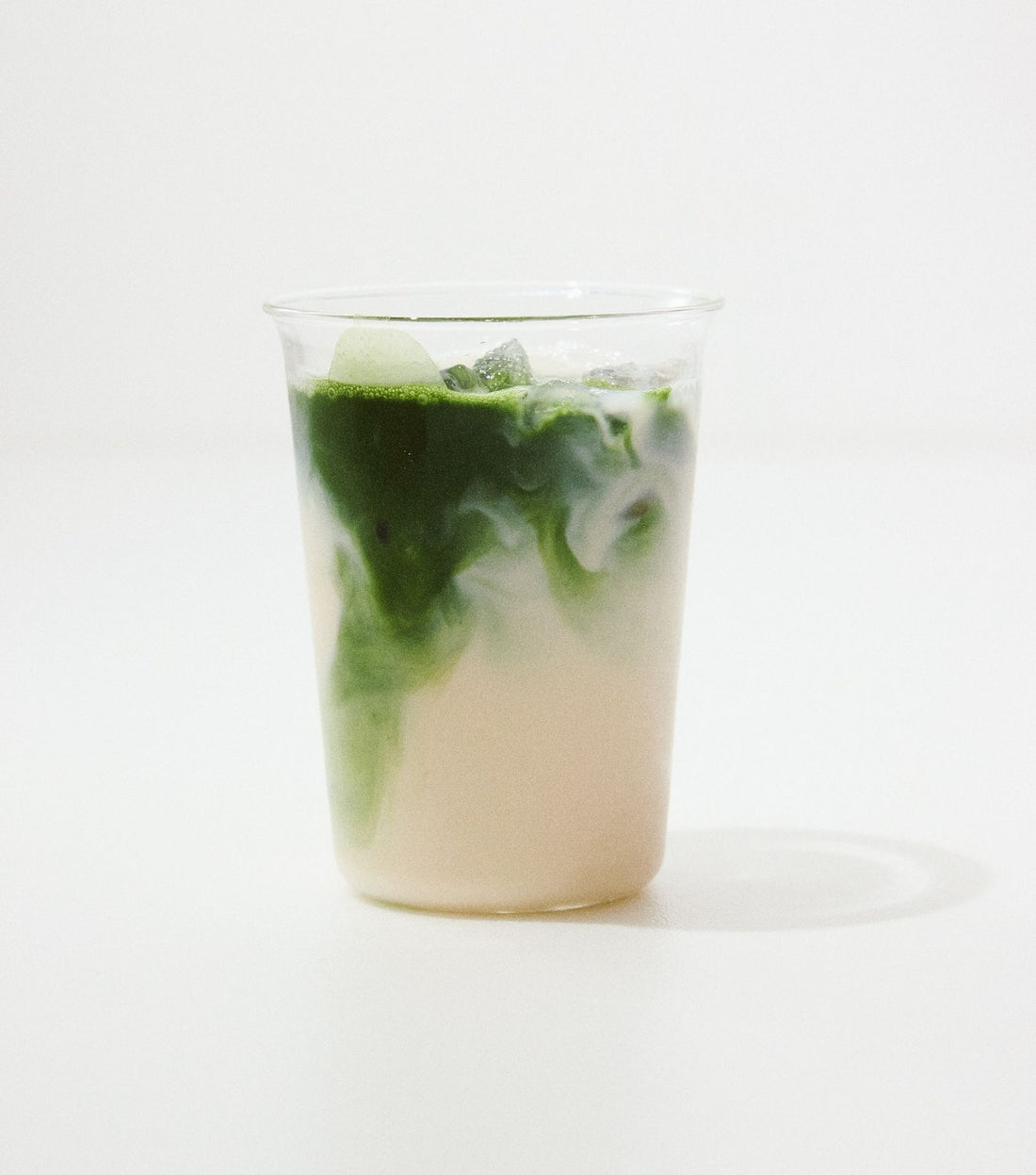How To Make The Perfect Matcha Latte

There's something about a good matcha latte that hits different.
Maybe it's the vibrant green that makes your morning feel a little more intentional. Maybe it's that smooth, creamy texture that feels like a hug in a mug.
Whatever it is, once you know how to make a proper matcha latte at home, those £5 Blank Street or Pret matcha runs start feeling unnecessary.
I’m Jasmine and I was interviewed by Bloomberg about matcha. Here’s everything you need to know about how to make the perfect matcha latte.
What You Need Before You Start
Before we get into technique, let's talk tools. You don't need to go full tea ceremony mode, but a few key items make the difference between "meh" and "magnificent."
A sieve. Matcha clumps are real, and they're not cute. Sifting breaks up those stubborn lumps before they end up in your drink.
A whisk. Traditional bamboo whisks (called chasen) are beautiful and effective, and we’d definitely recommend investing in one. You need something that can create motion in the liquid, not just stir it around. A spoon won't cut it.
Quality matcha. This one's non-negotiable. Ceremonial grade matcha like 753 Matcha is what you want for lattes. It's smoother, less bitter, and actually tastes like something you'd want to drink.
Steps To Make The Best Matcha Latte
Here's our tried and tested approach to making a matcha latte that's actually worth drinking. This works whether you're making it hot or iced.
Start with your matcha base. Sift 1.5 tsp of matcha powder into a small bowl or mug. This step seems fussy, but it's the difference between smooth and lumpy.
Add hot (not boiling) water. Pour in about 60ml of water at around 80°C. If you don't have a thermometer, boil your water and let it sit for about a minute. Boiling water burns matcha and brings out bitterness that no amount of milk can fix.
Whisk like you mean it. Use a quick M or W motion (think zig-zag) for 15 to 30 seconds. You're looking for a light froth on top and no visible clumps. The whisking motion aerates the matcha, which is what creates that signature creamy texture.
Add your milk. Pour in 200ml of your choice of milk. For hot lattes, warm your milk first. For iced, add ice to your glass and pour cold milk over your whisked matcha base.
That's it. Four steps between you and a legitimately good matcha latte.
Let's Talk Milk
Milk choice matters more than you'd think. It affects texture, froth, and how the matcha tastes.
Oat milk is the crowd favorite for a reason. It froths beautifully, has a natural sweetness that complements matcha's earthiness, and creates that creamy, full-bodied texture you're after.
Barista blends like Califia Farms Barista Blend or Oatside Barista Blend are our favorites.
Dairy milk gives you classic richness and stable foam. If you're not dairy-free, it's hard to beat for pure creaminess. Of course, go for a plant-based milk if you want to avoid dairy.
Soy milk is high in protein and froths well with a neutral flavor that lets the matcha shine.
Almond milk works if you like a lighter texture, though it won't froth well unless you grab a barista blend.
Whatever you choose, make sure it's something you actually like drinking. The milk takes up most of your latte, so if you don’t like the taste of it plain, adding matcha won't magically fix that.
Mistakes Everyone Makes (And How To Fix Them)
Even with a good recipe, there are a few common mistakes that can turn your latte from smooth to sad.
Using water that's too hot. This is the number one culprit behind bitter matcha. Matcha is delicate. Boiling water (100°C) literally burns it, destroying those subtle umami notes and leaving you with harsh bitterness. Keep your water around 80°C.
Skipping the sift. Yes, it's an extra step. Yes, it's worth it. Matcha powder is super fine and clumps easily. Those clumps don't just disappear when you add liquid. Make sure to sift the matcha into your bowl before adding the water.
Not whisking enough. You're not just mixing the powder in. You're aerating it. That's what creates the frothy, creamy texture that makes a matcha latte feel special. Whisk for at least 15 seconds, preferably 30.
Using the wrong grade of matcha. Culinary grade matcha is cheaper, but it's more bitter and less refined. Lower quality ceremonial grade matcha also runs into the same issue. More bitterness, less enjoyment. Get high-quality ceremonial grade matcha to make the best matcha lattes.
Making The Matcha Latte Your Own
Once you've got the basic technique down, matcha lattes are endlessly customizable.
Sweeteners. Matcha has natural umami and a slight bitterness that some people love and others want to balance. Maple syrup, honey, and agave all work. Start with a small amount and adjust to taste.
Temperature. Hot lattes feel like a ritual. Iced lattes feel refreshing and modern. Both are delicious. The method is exactly the same. You're just changing whether you heat or chill your milk.
Matcha strength. The 1.5 tsp we recommend is a good middle ground, but play with it. More matcha means stronger flavor and more caffeine. Less means a gentler, milkier drink. Find your sweet spot.
Why This Matters
Look, you could keep buying matcha lattes at cafes. They're convenient. But they're also expensive, often too sweet, and you never quite know what quality of matcha you're getting.
Making it at home gives you control. You know exactly what's in your cup. You can adjust everything to your taste. And you save enough money that buying really good ceremonial grade matcha becomes an easy choice instead of a luxury.
Plus, there's something meditative about the process. Sifting, whisking, watching the foam develop. It's a small ritual that makes your day feel more intentional.
Less rushed, more present.
